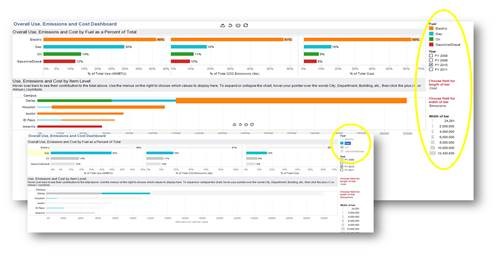
By Andrew Winslow | Wed, December 4, 19
Welcome to the latest REED Rendering issue, a series of blogs where we bring your attention to interesting trends that we see in the data and the stories behind those trends.
This is an exciting time for the Regional Energy Efficiency Database (REED) team here at NEEP!
In keeping with NEEP’s core mission and practice of collaboration, last month we hosted a stakeholder meeting to discuss the evolution of REED. Stakeholders from seven states in the Northeast and Mid-Atlantic attended, along with representatives from the Energy Information Administration (EIA), National Grid, ISO-New England, E4TheFuture, and the Consortium for Energy Efficiency (CEE). We discussed the changing landscape of energy efficiency reporting metrics and associated challenges, including the recent trend towards an all-fuels metric. We heard firsthand how REED is being used today and what stakeholders think can be improved. Every observation was helpful in piecing together and refining a vision for REED’s future.

REED was established in 2011 to provide the Northeast and Mid-Atlantic region with a regional platform for consistent reporting of energy efficiency program savings, expenditures, and other program-level data traditionally used to track and evaluate EE program results. However, market and policy forces are starting to reshape Energy Efficiency Resource Standards (EERS) and EE programs. Our world is becoming increasingly more connected, and our appliances are becoming smarter. Advancements in technology have opened the door to new kinds of energy efficiency measures such as battery storage, active demand management technologies, and home electrification with electric vehicles and heat pumps. States are setting more aggressive decarbonization targets and want to better align their energy efficiency policy with state goals and values such as climate stabilization, public health outcomes, and energy affordability, equity, and justice. REED needs to evolve to remain a relevant regional energy efficiency resource that can be used to inform new policies and programs.
REED and past EERSs were designed to report energy savings data using resource-specific program metrics such as MWh for electric savings and therms for natural gas savings. But changes in policy are increasingly incompatible with this method because resource-specific metrics cannot accommodate new program approaches such as strategic electrification and other forms of fuel shifting, and they do not directly align with carbon reduction goals. Shifting EE program reporting to an all-fuels program goal and metric is a solution that enables electrification by looking at energy savings holistically. For example, an increase in electrical use for a heat pump system corresponds with a decrease in natural gas or oil. Changes in both electric and gas use must be computed to adequately account for program impacts. This approach is not without its own pitfalls, however, as an all-fuels goal may set utilities against each other and can incentivize low-hanging fruit instead of more comprehensive measures. These are some of the questions that states, utilities, and the REED team are thinking about.

All of the states in the NEEP region have climate goals, and Massachusetts and New York are the first states in the region that have established an all-fuels goal. In addition, both states have set resource-specific sub-targets. The previous REED Rendering, Capturing Evolving Energy Efficiency Programs in REED, looks more deeply into these state goals. Several other states, including Vermont, Rhode Island, and New Jersey, have been considering all-fuels metrics for the next iteration of their EERS policies and EE program plans. There is some discussion and debate about whether MMBtu or CO2e (a greenhouse gas unit of measurement) is the preferred all-fuels metric. States felt that a combination of the two could possibly work, but this is a question that needs more consideration. NEEP will continue to bring stakeholders together to help facilitate this discussion about all-fuels metrics.
Meeting participants shared that their primary use of REED is to benchmark themselves against others to help track program progress. REED’s consistent and transparent reporting platform makes this possible, and helps facilitate understanding, comparisons, and aggregations of EE program impacts in the region. Some metrics of particular interests to add to REED are: further breakdown and more consistent use of program expenditure categories, including administration costs, and broader reporting of jobs impacts.
The meeting also included presentations about other online energy data resources: EIA’s State Energy Portal and the New York State Clean Energy Dashboard. These presentations provided valuable inspiration and examples of helpful ways to present metrics relevant to our changing industry.
Overall, it was a great event for REED stakeholders from across the region to share their ideas and learn from each other. The questions regarding changing metrics and tracking electrification have not been resolved, however, this was a great start to the conversation and provided a clearer path forward. The REED team has taken this information and will be finalizing a REED Strategic Vision, as well as potentially forming a REED Advisory Committee to guide changes to REED in 2020 and beyond.
